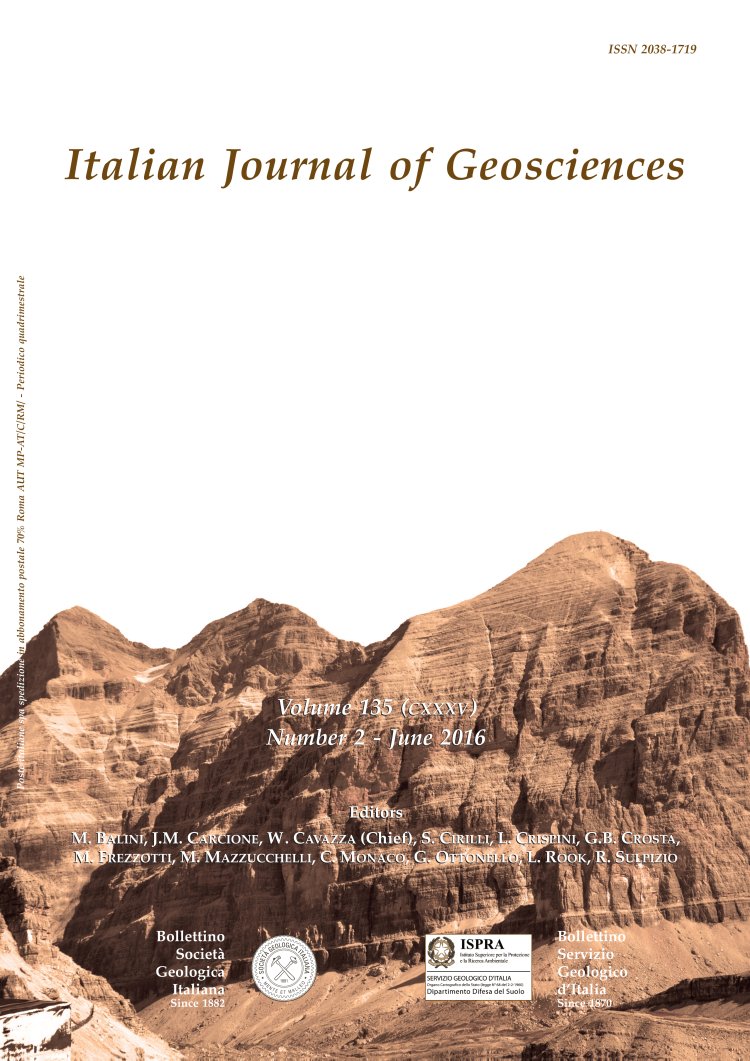
Evaluation of the stability of a rock cliff by means of geophysical and geomechanical surveys in a cultural heritage site (south-eastern Sicily)
Giovanna Pappalardo (*), Sebastiano Imposa (*), Simone Mineo (**) & Sabrina Grassi (*)
(*) Università degli Studi di Catania, Dipartimento di Scienze Biologiche, Geologiche e Ambientali. Sezione di Scienze della Terra. Corso Italia, 57 - 95129 Catania (I). Corresponding author e-mail: imposa@unict.it; ph: +39-95-7195701; fax: +39-95-7195726.
(**) Università degli Studi di Napoli Federico II, Dipartimento di Scienze della Terra, dell'Ambiente e delle Risorse, Largo San Marcellino, 10 - Napoli (I).
Volume: 135 (2016) f.2
Pages: 308-323
Abstract
An integrated geophysical and geomechanical study is proposed for the evaluation of the fracturing condition and the stability of a rock cliff in the cultural heritage site of Ispica (southeastern Sicily).
The site comprises several worship constructions such as the Friars Minor Monastery, the oldest construction of the village and a Church. The buildings stand on the edge of a 35 m high calcareous cliff, showing instability conditions related to the presence of deep fracturing and karst features. Due to possible future rockfalls the slope is expected to be subjected to retreat phenomena, which will threat the structures on top.
The study of the seismic wave speed and of the environmental noise (microtremors), through active and passive seismic survey, proved useful in highlighting the spatial variation of the degree of fracturing in the rock mass. Moreover, the resonance frequency of the site allowed estimating the frequencies at which the ground motion is amplified by stratigraphic features.
The stability analysis pointed out the critical condition of the slope, affected by different potential failure mechanisms with very low safety factors and a high probability of failure.
All the considerations are contextualized in the wide Hyblean panorama, where important tectonic structures are responsible of the actual geological setting and of the seismicity of the area, as well as of the geomechanical condition of the slopes.
The site comprises several worship constructions such as the Friars Minor Monastery, the oldest construction of the village and a Church. The buildings stand on the edge of a 35 m high calcareous cliff, showing instability conditions related to the presence of deep fracturing and karst features. Due to possible future rockfalls the slope is expected to be subjected to retreat phenomena, which will threat the structures on top.
The study of the seismic wave speed and of the environmental noise (microtremors), through active and passive seismic survey, proved useful in highlighting the spatial variation of the degree of fracturing in the rock mass. Moreover, the resonance frequency of the site allowed estimating the frequencies at which the ground motion is amplified by stratigraphic features.
The stability analysis pointed out the critical condition of the slope, affected by different potential failure mechanisms with very low safety factors and a high probability of failure.
All the considerations are contextualized in the wide Hyblean panorama, where important tectonic structures are responsible of the actual geological setting and of the seismicity of the area, as well as of the geomechanical condition of the slopes.
Keywords
Get Full Text